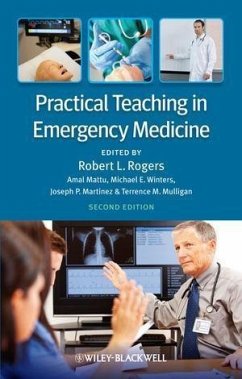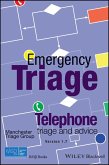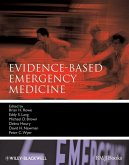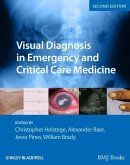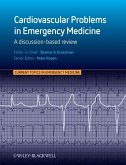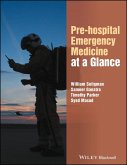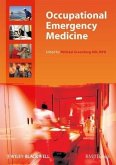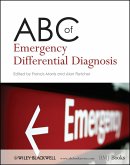Emergency medicine attendings who wish to hone their teaching skills can find a number of books on educational strategies written by physicians from other disciplines. However, until the publication of the first edition of this book, they did not have access to a text written by emergency medicine physicians on methods of teaching that are directly applicable to teaching EM. This book was compiled to meet that need.
Following the introductory section, which provides important background information, the book's contents are organized into 4 sections that correspond to the core needs and interests of EM educators: Section 2 focuses on practical and ethical considerations of teaching in the ED; Section 3 provides strategies for teaching specific groups of learners; Section 4 looks at the skills that are characteristic of the best EM educators; and Section 5 looks indepthly at specific teaching techniques and strategies.
Now more than ever this book addresses the needs of physician educators from all over the world. New chapters discuss lecturing to an international audience; using simulation as a teaching tool; how to make journal club work for you, and other topics that are of broad interest to medical educators in this field. In general, each chapter has been updated and reviewed to make sure the content was something that emergency physician educators could use in any country.
The chapter contributors are widely regarded as leaders in the field of emergency medicine education and faculty development. Authors were given free rein to develop their chapters and write in their own style. They were asked to present their personal views on how to successfully teach the art of emergency medicine, rather than review evidence-based guidelines regarding medical education. As a result, most of the chapters have few references. This first-person approach to a multi-authored textbook yields a compilation that varies in style from chapter to chapter and exposes the reader to a variety of communication techniques.
Following the introductory section, which provides important background information, the book's contents are organized into 4 sections that correspond to the core needs and interests of EM educators: Section 2 focuses on practical and ethical considerations of teaching in the ED; Section 3 provides strategies for teaching specific groups of learners; Section 4 looks at the skills that are characteristic of the best EM educators; and Section 5 looks indepthly at specific teaching techniques and strategies.
Now more than ever this book addresses the needs of physician educators from all over the world. New chapters discuss lecturing to an international audience; using simulation as a teaching tool; how to make journal club work for you, and other topics that are of broad interest to medical educators in this field. In general, each chapter has been updated and reviewed to make sure the content was something that emergency physician educators could use in any country.
The chapter contributors are widely regarded as leaders in the field of emergency medicine education and faculty development. Authors were given free rein to develop their chapters and write in their own style. They were asked to present their personal views on how to successfully teach the art of emergency medicine, rather than review evidence-based guidelines regarding medical education. As a result, most of the chapters have few references. This first-person approach to a multi-authored textbook yields a compilation that varies in style from chapter to chapter and exposes the reader to a variety of communication techniques.
Dieser Download kann aus rechtlichen Gründen nur mit Rechnungsadresse in D ausgeliefert werden.
""This is an easy-to-read book ideal for junior faculty in emergency medicine. The summaries at the end of each chapter are well written and high yield. The book describes practical ways of teaching that can be easily applied and includes references for resources to fill out the details not supplied in the book. The advantage of the second edition is the focus on complementing education with online resources and technology that appeal to this generation's learners." -- Doody's, 17 May 2013
"This book is structured and organized to be an easy-to-follow guide on becoming a better educator in emergency medicine. . . The mechanics of treatment are thoroughly explained in this book by leaders in emergency medicine education, providing best practices and effectively focusing on the emergency medicine venue." -- The Annals of Pharmacotherapy, 1 July 2013
"This is an easy-to-read book ideal for junior faculty in emergency medicine. The summaries at the end of each chapter are well written and high yield. The book describes practical ways of teaching that can be easily applied and includes references for resources to fill out the details not supplied in the book. The advantage of the second edition is the focus on complementing education with online resources and technology that appeal to this generation's learners." -- Doody's, 17 May 2013
"This book is structured and organized to be an easy-to-follow guide on becoming a better educator in emergency medicine. . . The mechanics of treatment are thoroughly explained in this book by leaders in emergency medicine education, providing best practices and effectively focusing on the emergency medicine venue." -- The Annals of Pharmacotherapy, 1 July 2013
"This is an easy-to-read book ideal for junior faculty in emergency medicine. The summaries at the end of each chapter are well written and high yield. The book describes practical ways of teaching that can be easily applied and includes references for resources to fill out the details not supplied in the book. The advantage of the second edition is the focus on complementing education with online resources and technology that appeal to this generation's learners." -- Doody's, 17 May 2013

